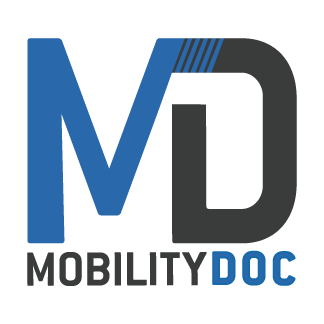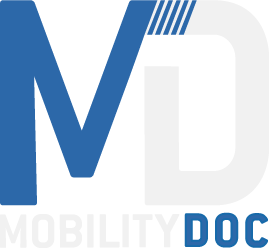Spring is well underway and we are starting to get back to doing our favorite things we love to do outside! With that in mind, that time spent indoors during winter can cause us to be more sedentary. All that extra sitting around causes muscles to become stiff and lazy. These muscles may even stop working all together. Since we’ve been talking a lot about primers, we are going to share the perfect one! This hip and glute primer prevents injury by making sure your muscles know exactly what they need to do. Let’s talk about a common issue we face due to sedentary lifestyles and give you some Lower Crossed Syndrome exercises to get your rear in gear (pun intended)!
Dead Butt Syndrome
More casually known as Dead Butt Syndrome (DBS), Lower Crossed Syndrome is one of the most common body compensation issues faced by our world today. Being seated for long periods of time allows your body to have overactive and under active muscle patterns that “cross”. They cross from the front and back of your hips. Under active and stretched out muscle groups are typically your glutes. As we cross to think about the opposite of our glutes, overactive muscle groups are typically shortened and tense in a working state; these are typically your hip flexors.
Everyone knows the saying “get up and stretch your legs”. That is because as humans are bodies aren’t meant to be in the seated position for extended periods of time. You’re probably sitting down while you’re reading this right now. Take a moment and think about the relationship between your glutes, hips, and legs. If you’re at a desk you’re probably at 2 – 90 degree angles. One from your torso to your knees and the other from your hips to your ankles. When we sit this way our glutes are stretched out and our hip flexors are scrunched together. Sitting for an extended period of time allows your glutes to become accustomed to this stretched out position. They’re not working and honestly they get lazy. Lazy glutes are not good! We need them strong and active for our everyday lives and the sports we love to do.
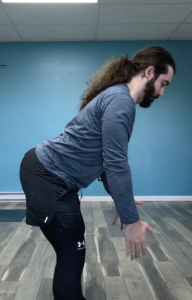
Dr. John is showing excessive sway in his back while bending forward. This can be a symptom of DBS. If you identify with this, Don’t worry! We some great Lower Crossed Syndrome Exercises coming up.
Symptoms of LCS
Even though our culture is filled with seated activities, it’s so important that we keep ourselves moving. Why? The more we sit, the more our muscles continue to compensate in a bad way. That means they continue becoming weaker and shorter causing pain and poor mobility. The two biggest signs that you may be falling victim to Lower Crossed Syndrome are excessive low back arch and anterior (forward) tilt of the pelvis. Remember what muscles are overactive and underactive? It makes sense that they are pulling this way causing your back to sway and your hips to tilt forward. These two things can be coupled with low back and hip pain. Your pain and discomfort may not stop there! It’s likely that it also goes to the knees and hamstrings. This is due to added strain on the muscles and joints because of improper posture.
Lower Crossed Syndrome Exercises
So, how do we get ahead of issues like this? We use a Mobility-Doc method primer to help recalibrate our hips and wake up those glutes. The primer can be used 3 different ways. You can use this as a warm up to prepare you for the exercise you’re about to do. It can be used as a cool down to help reset your body after doing something with irregular movement patterns. You can also use it as a stand alone set of exercises to keep your body moving well!
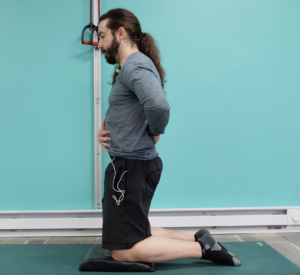 We use this exercise to really start waking up those muscles. It’s so important to think about only moving from your hips! Don’t let you back sway when you get to the top.
We use this exercise to really start waking up those muscles. It’s so important to think about only moving from your hips! Don’t let you back sway when you get to the top.
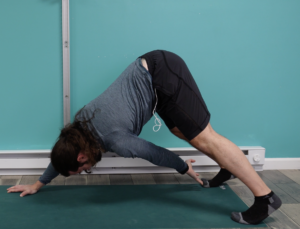 Continuing to work on the hip hinge, this exercise now introduces some hamstring flexibility and bonus arm/shoulder strength
Continuing to work on the hip hinge, this exercise now introduces some hamstring flexibility and bonus arm/shoulder strength
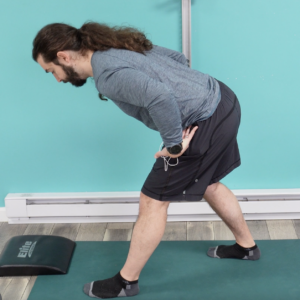 This exercise highlights movement with our hip hinge. Alternating feet allows us to really check and feel the difference between the balance, movement, and overall strength.
This exercise highlights movement with our hip hinge. Alternating feet allows us to really check and feel the difference between the balance, movement, and overall strength.
Watch this Hip Primer Video for everything you need to know about the Lower Crossed Syndrome exercises above!
This hip primer isn’t just good for people suffering from LCS. You can use this to improve your squats and many other activities! Give it a try and incorporate this primer into your next lower body workout or before your next favorite lower body based sport.
Do you have lower back pain or hip pain? Have you tried beating it yourself but can’t quite tackle the issue? Let us give you some guidance. Try our MDRx Hips program. This 4 week program is for the person looking for a little DIY love to get your hips back on track. We chose exercises to make sure you’re covering all 3 parts of mobility. That way your hips will feel as good as new!
Check Out Our Athletes!
Mostafa Hassan
Meet Mostafa. He is an athlete coming all the way from Egypt! Mo is a recent addition to the Mobility-Doc fam and competes in shot put. An extremely accomplished competitor, he had an amazing top 8 finish in the 2020 Tokyo Olympic games. This March (2023) he broke both his personal and Egyptian throwing records with a mark of 21.65m. Pushing to qualify for the 2024 Olympics, Mo is heading to compete in the World Athletics Championship in Budapest this August where John will be making sure he throws his best! The video on the left is the record breaking throw. Check it out!
